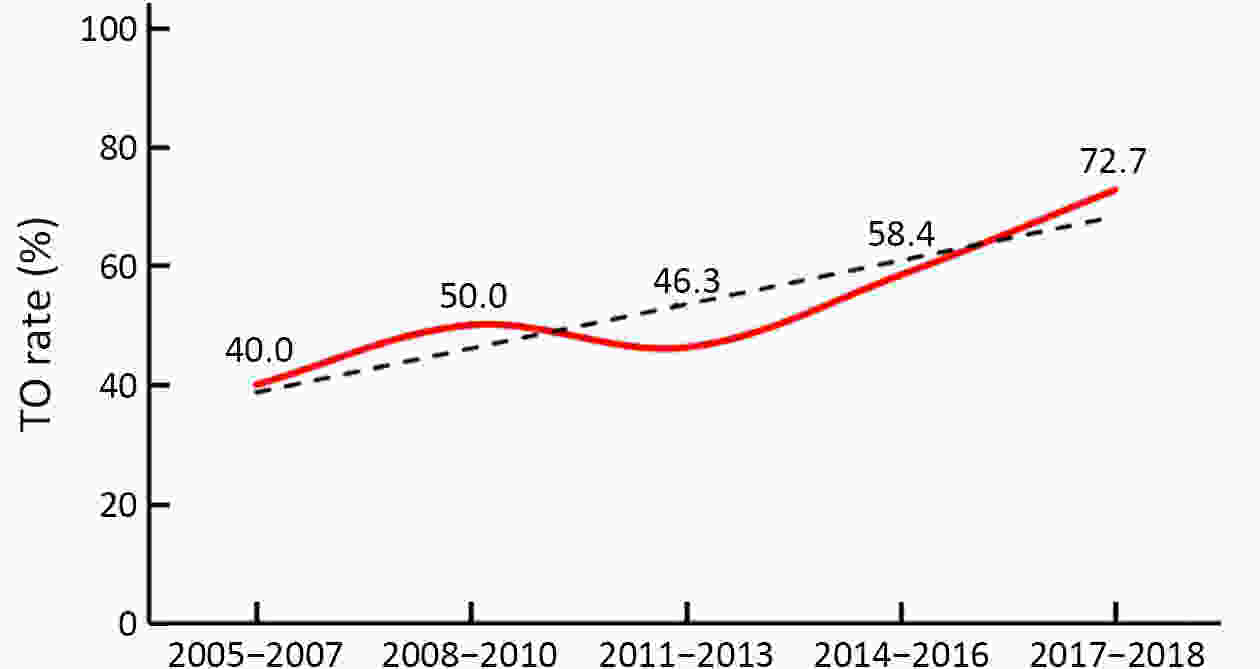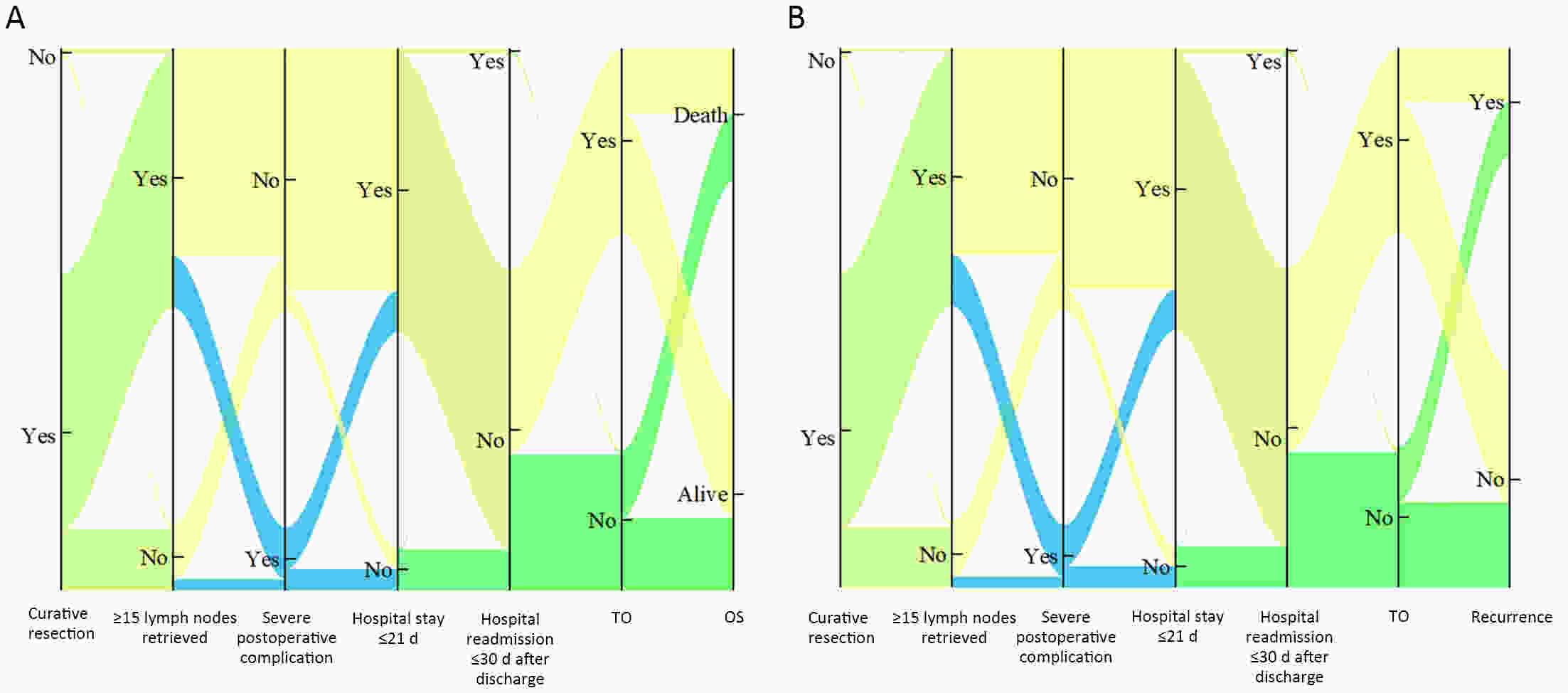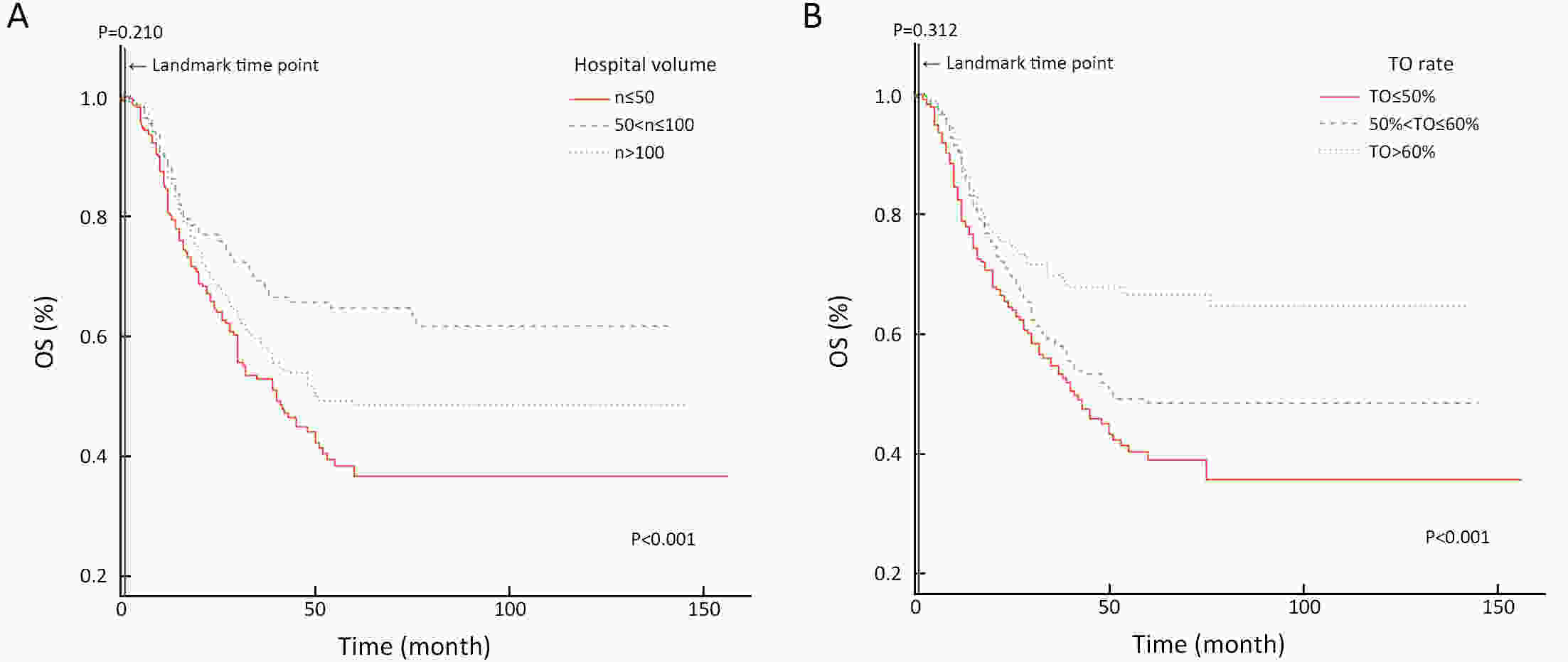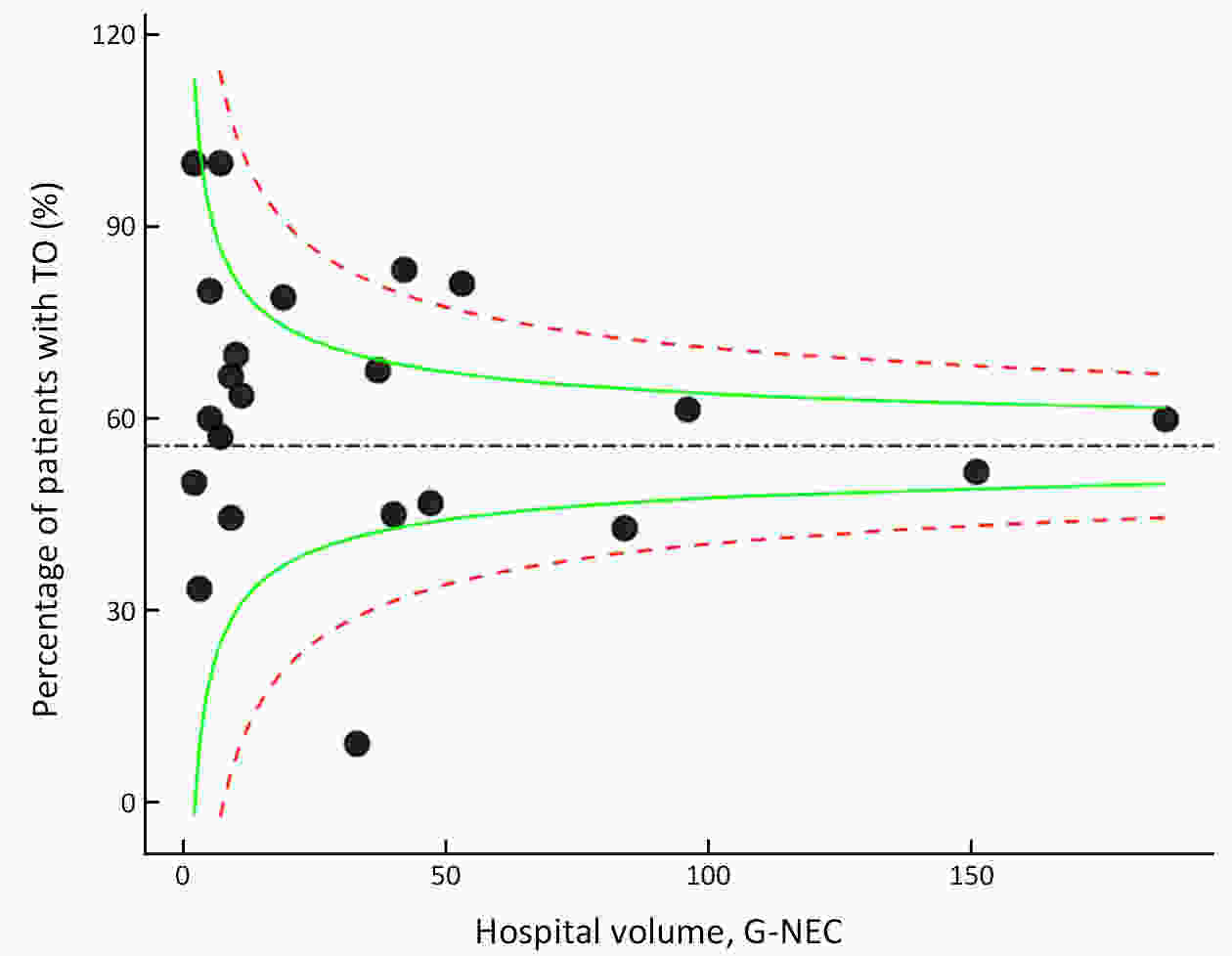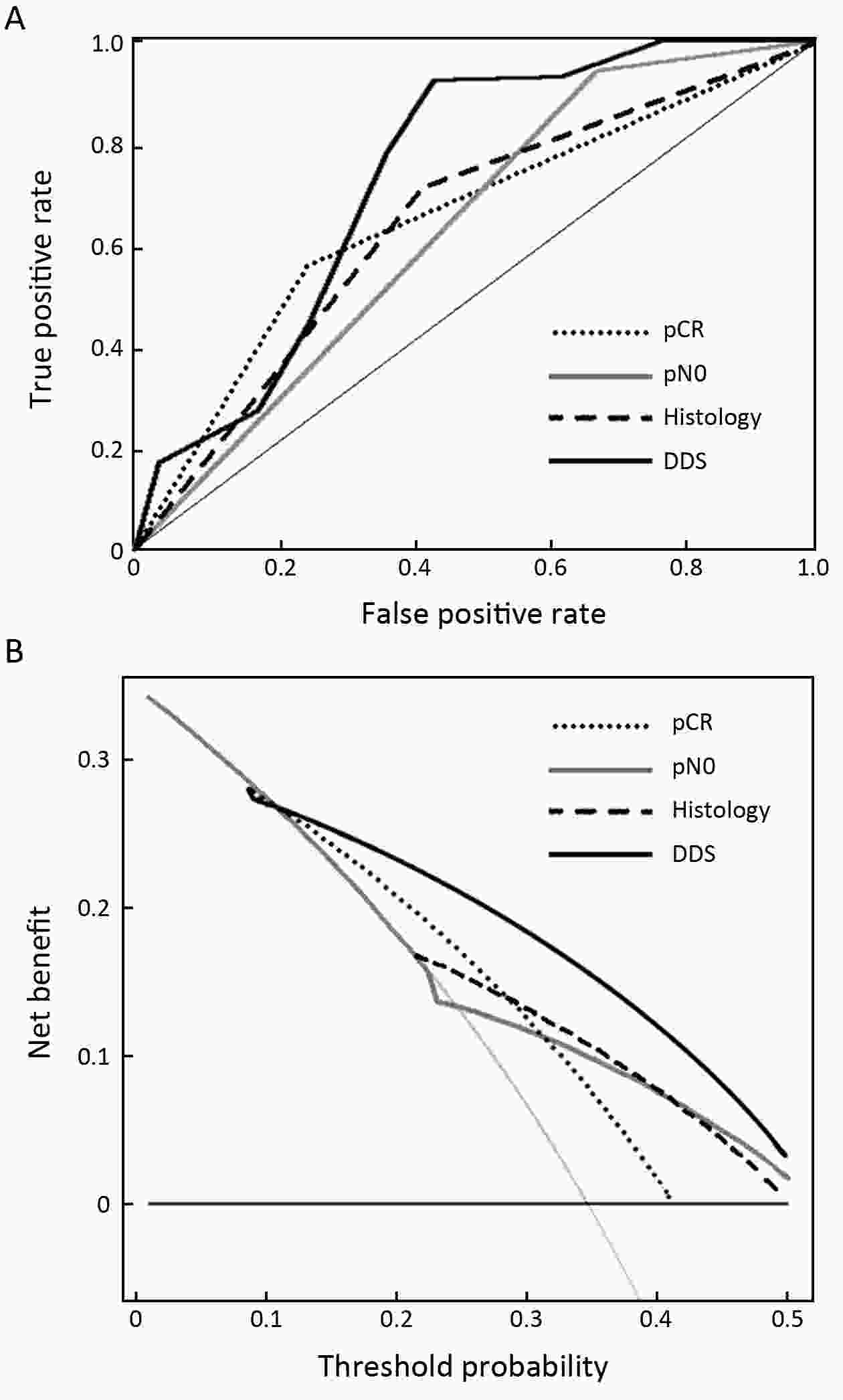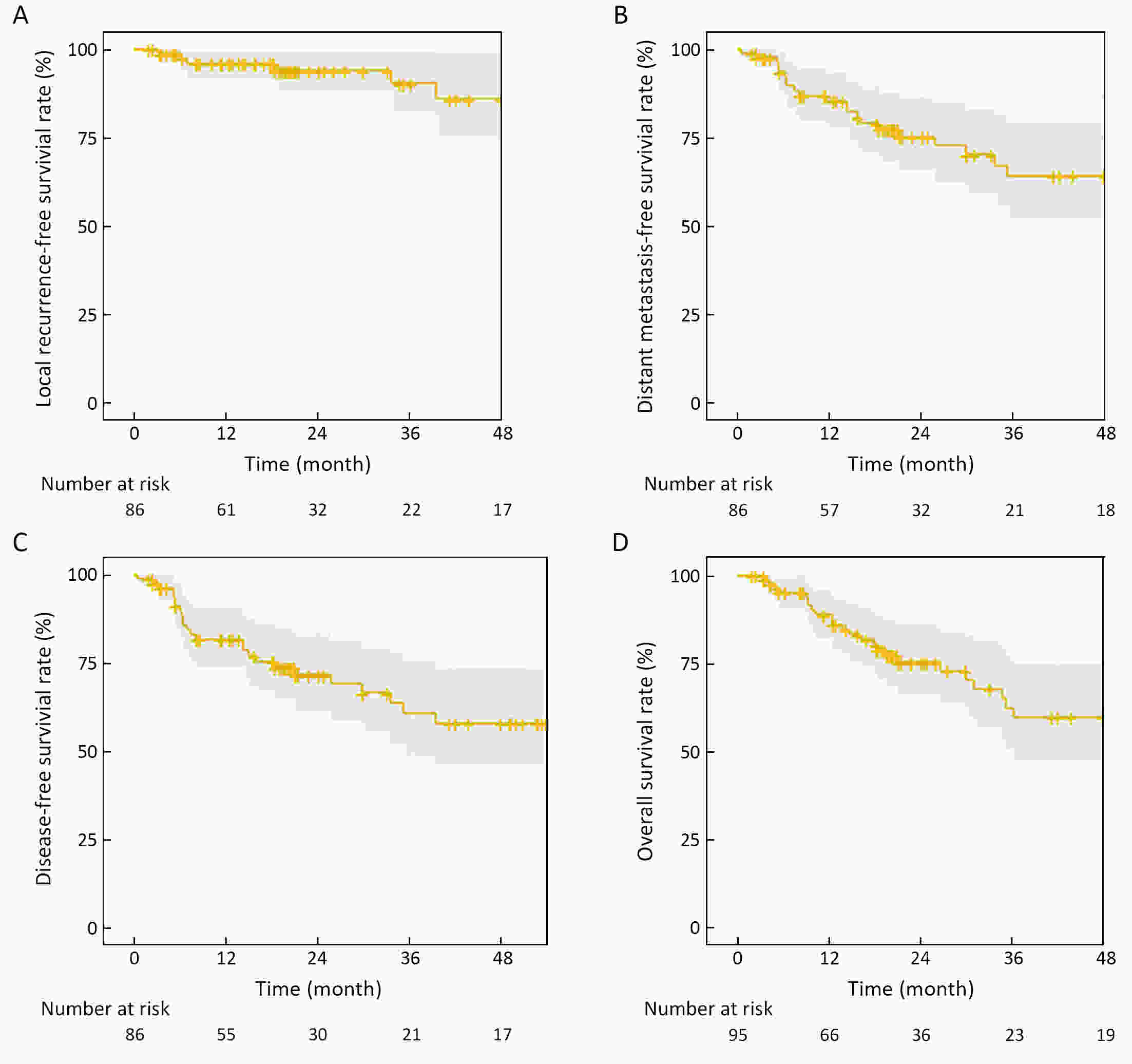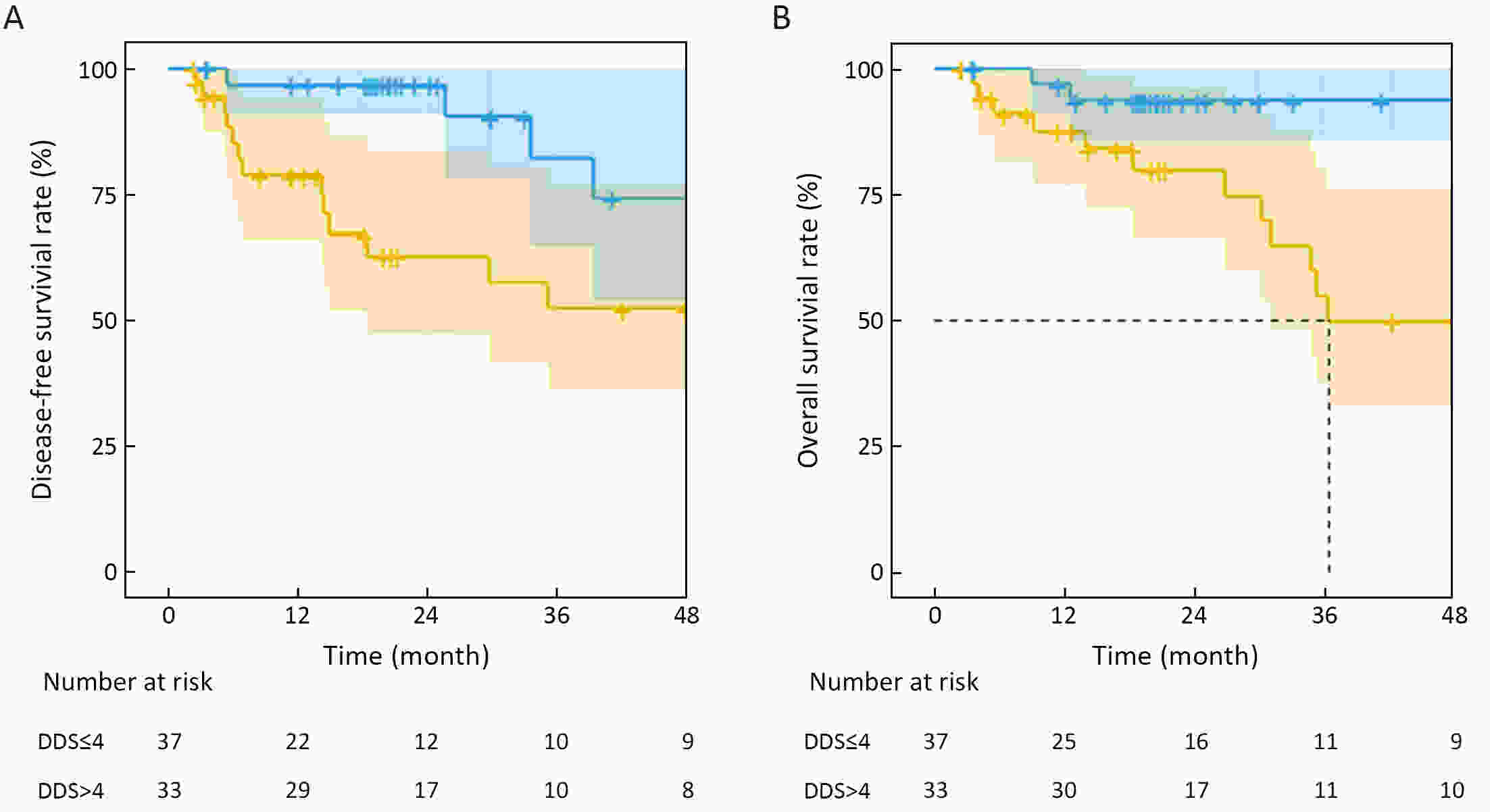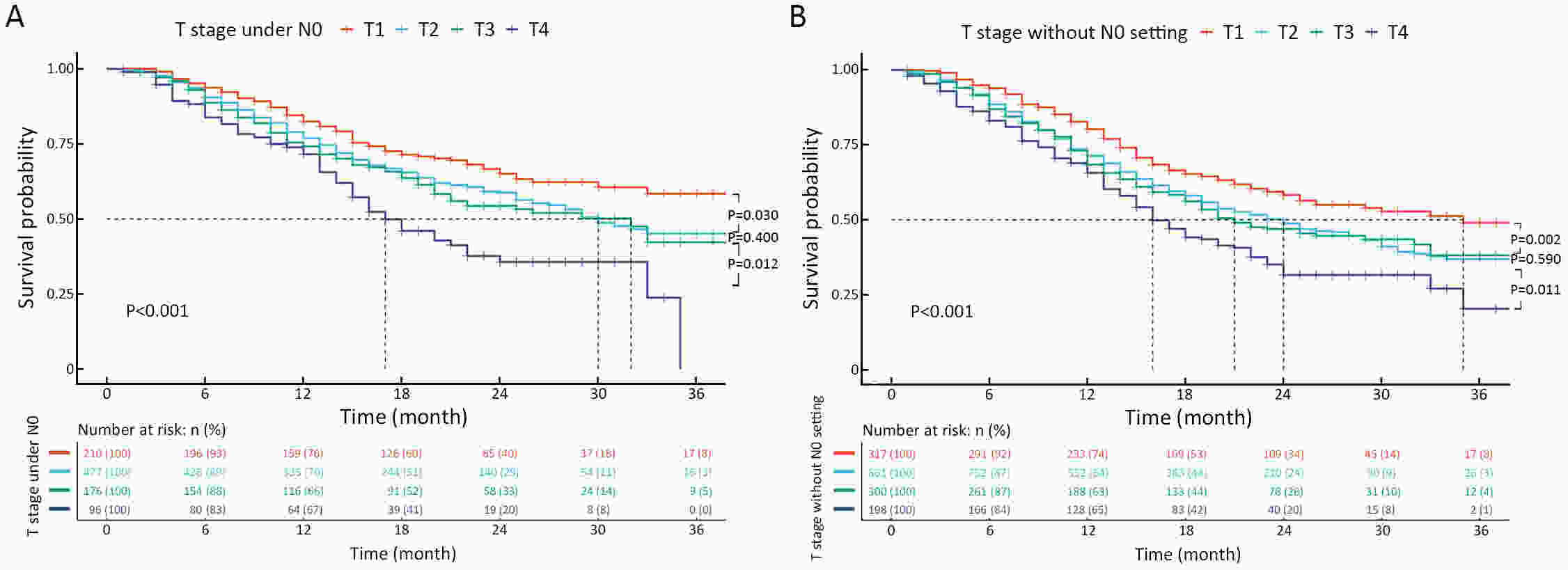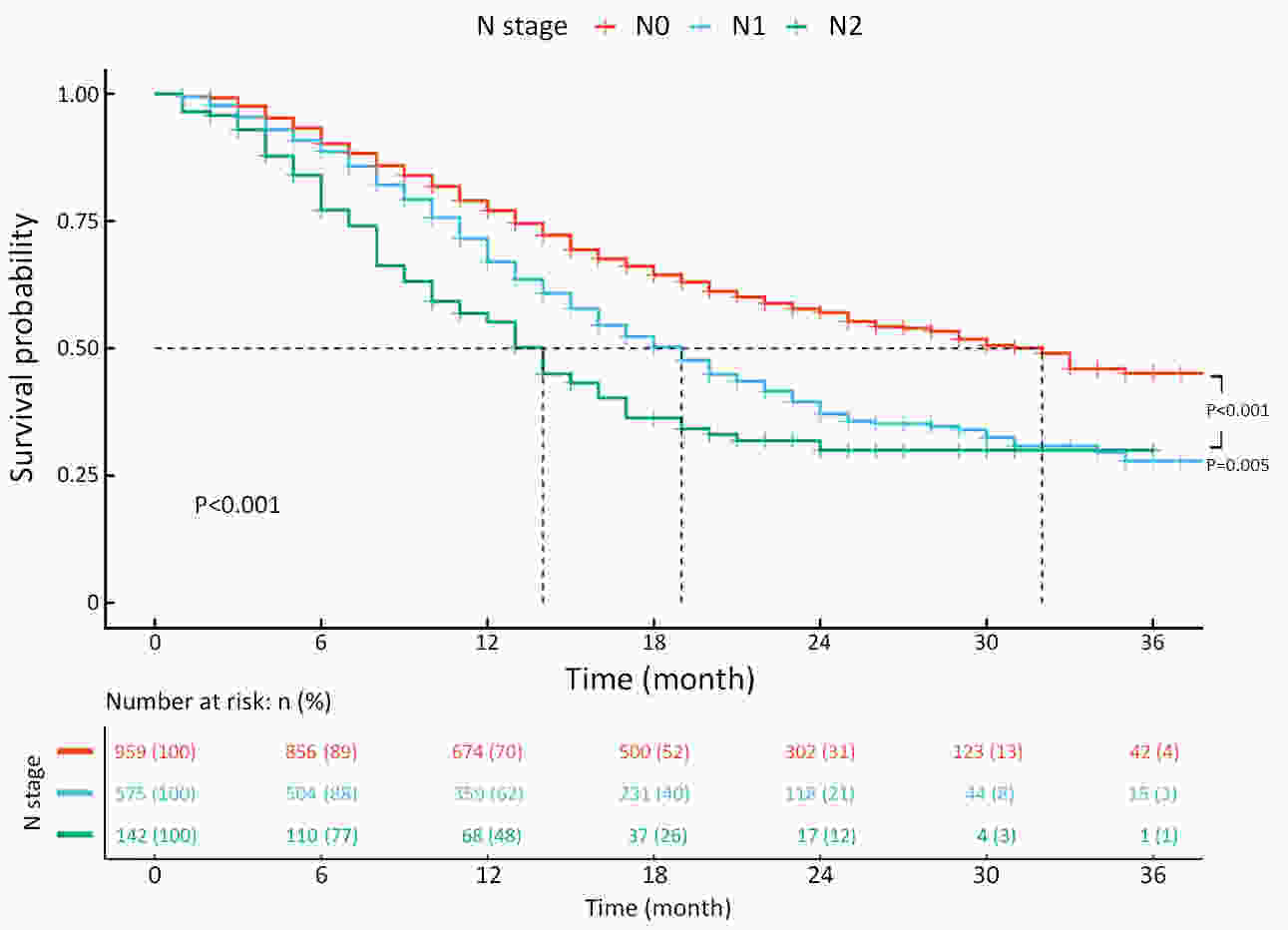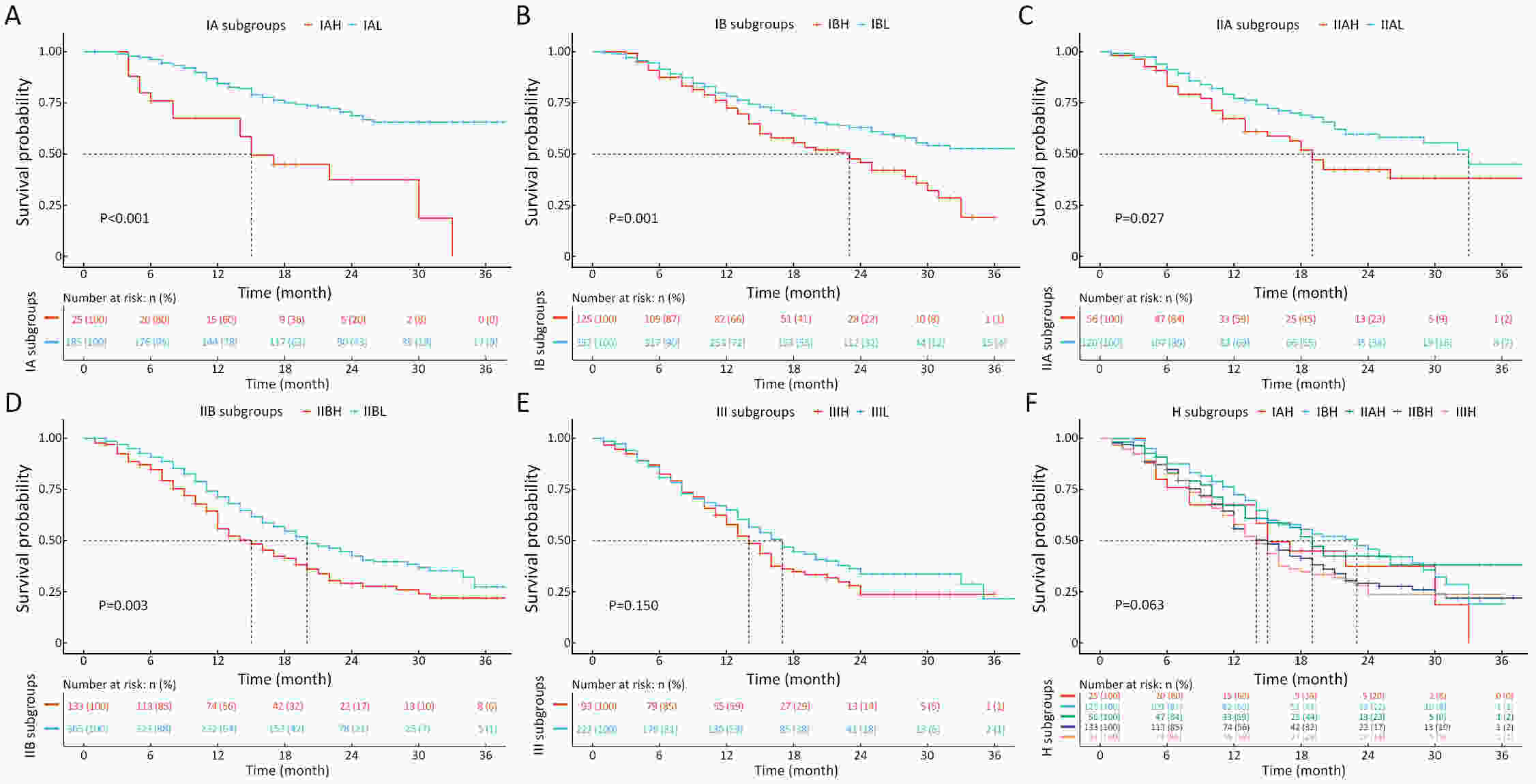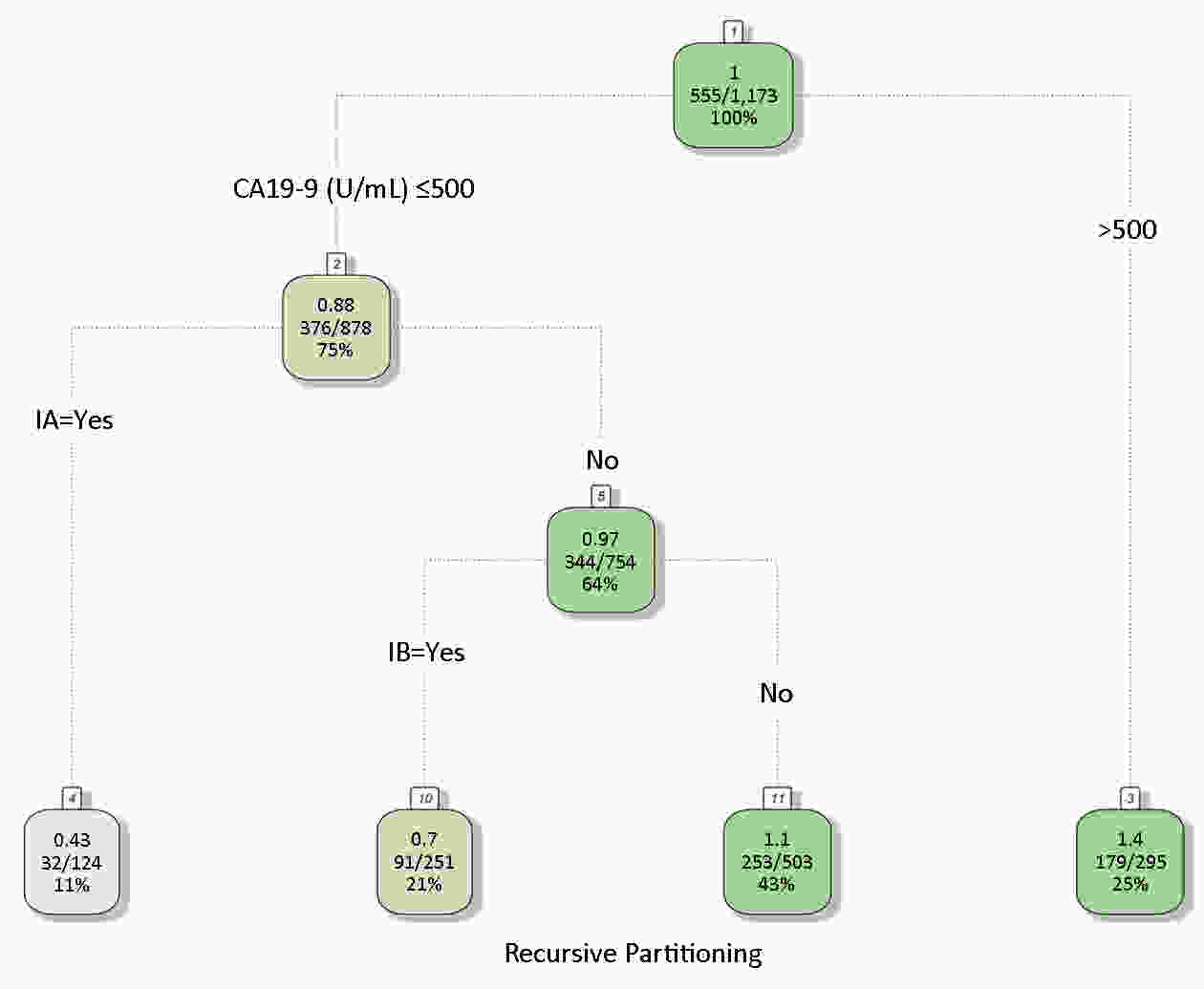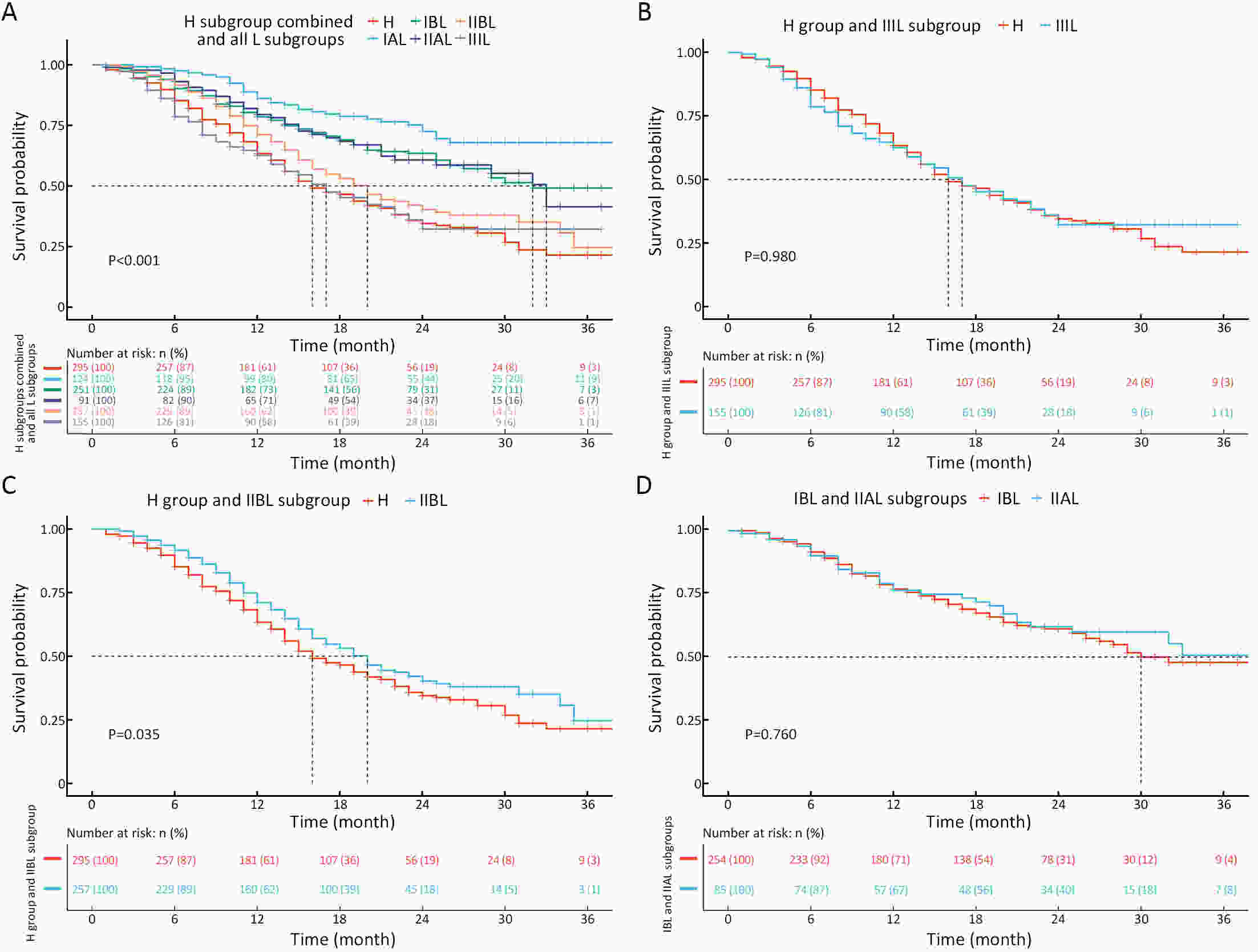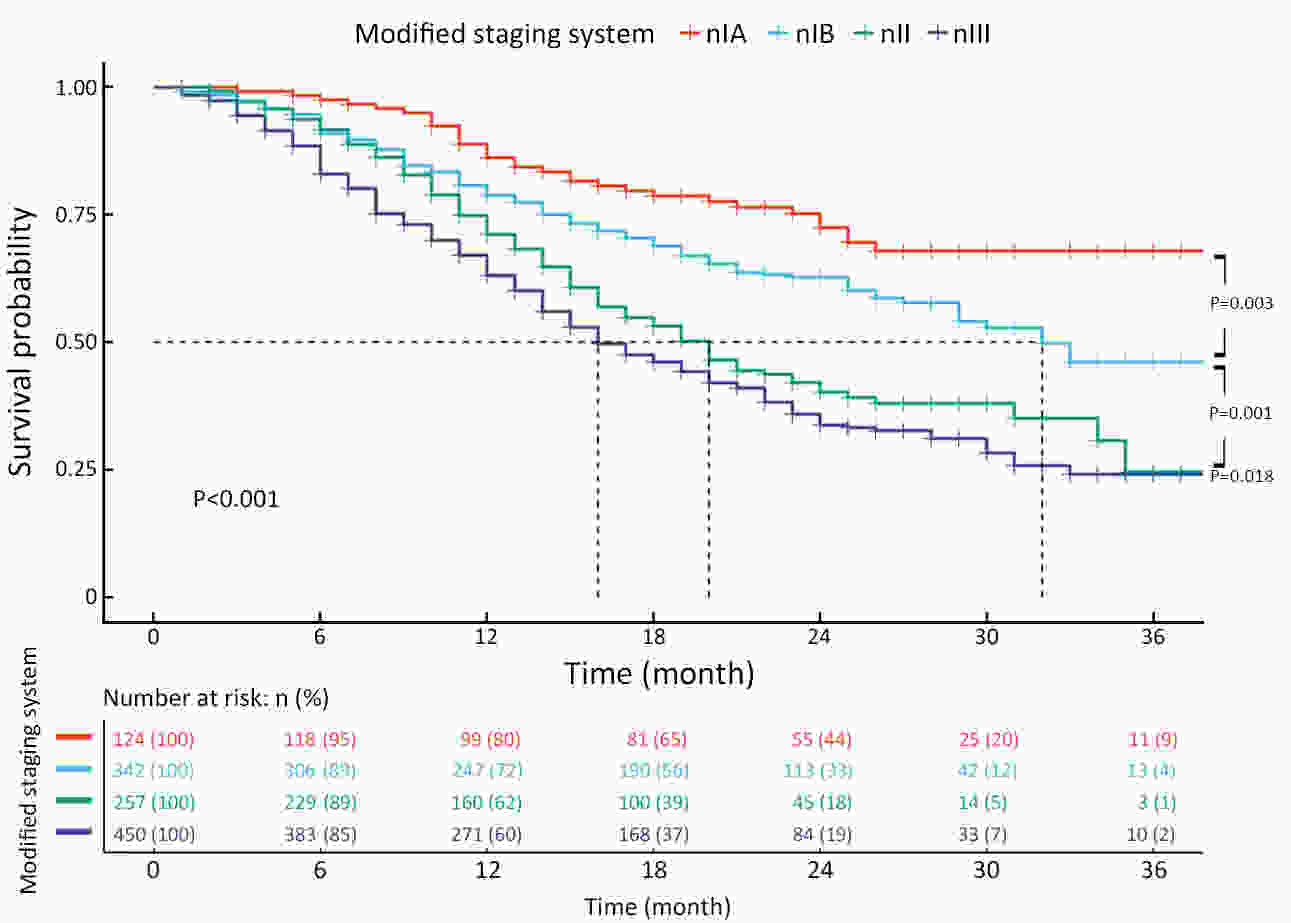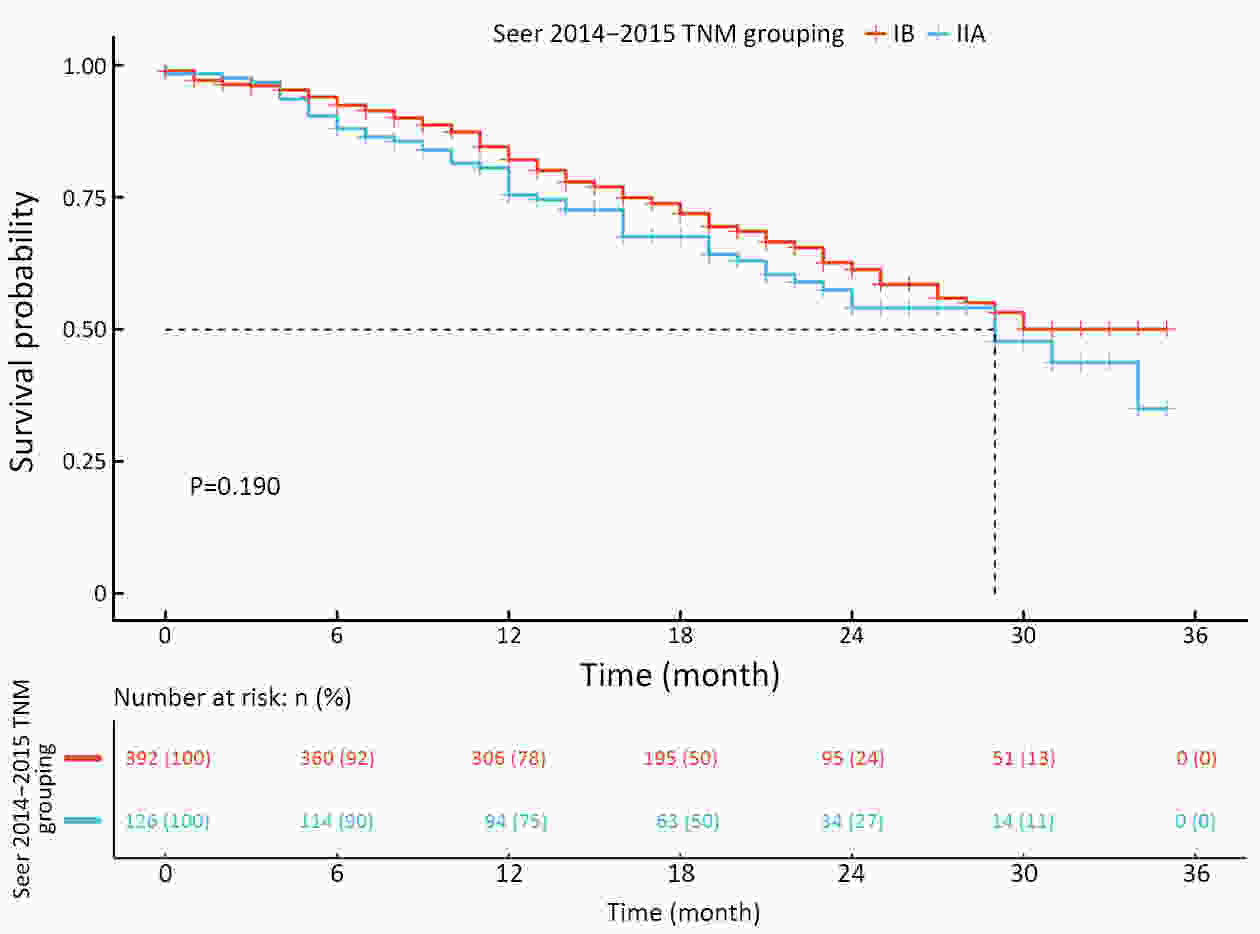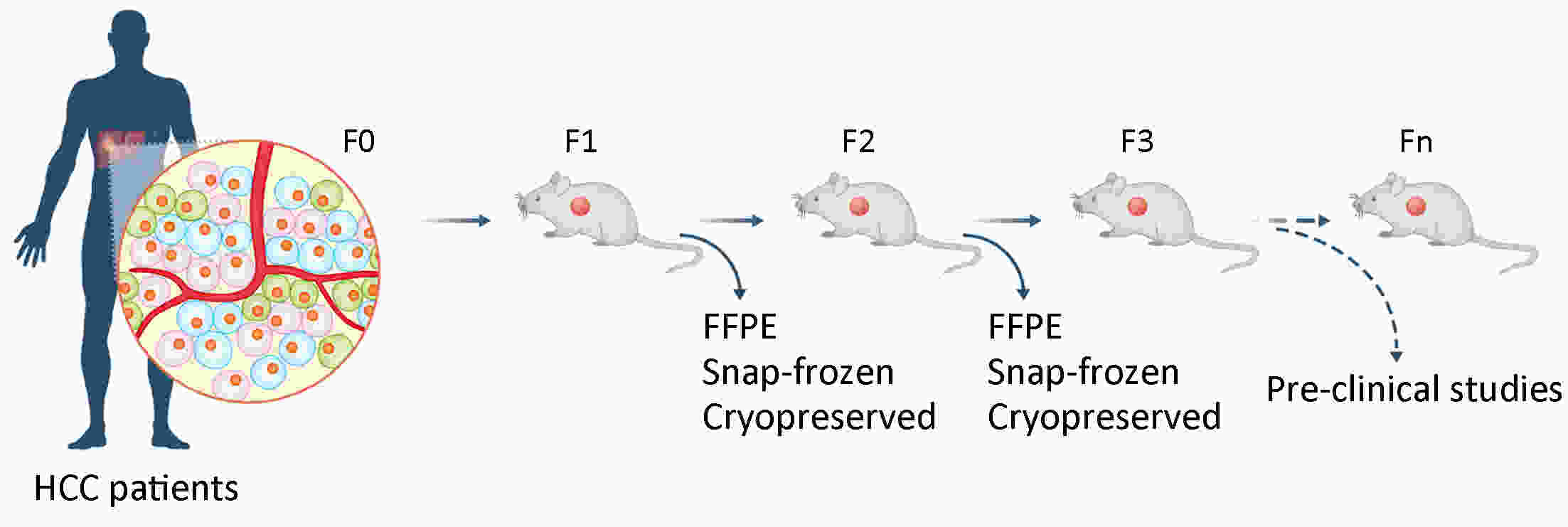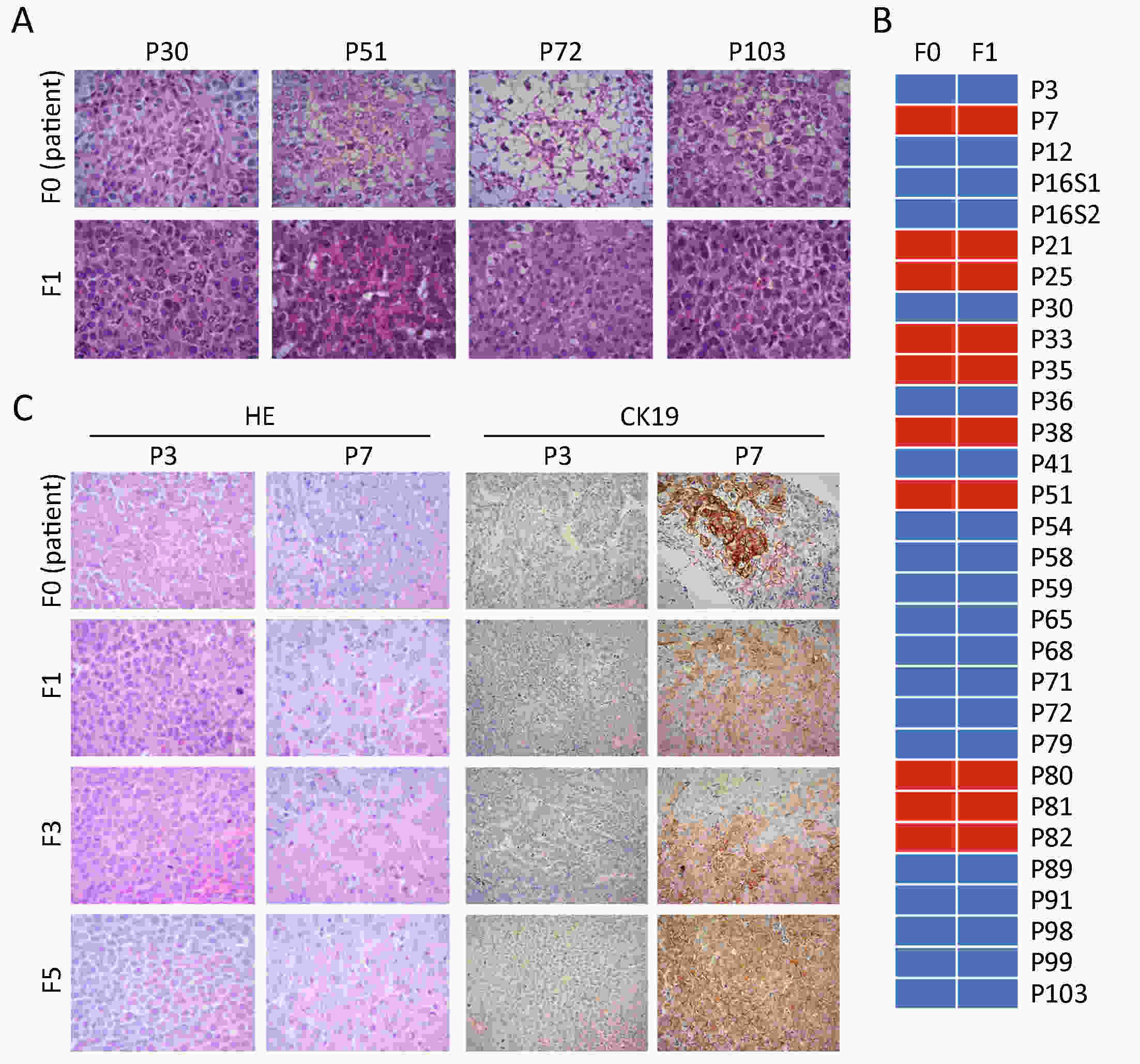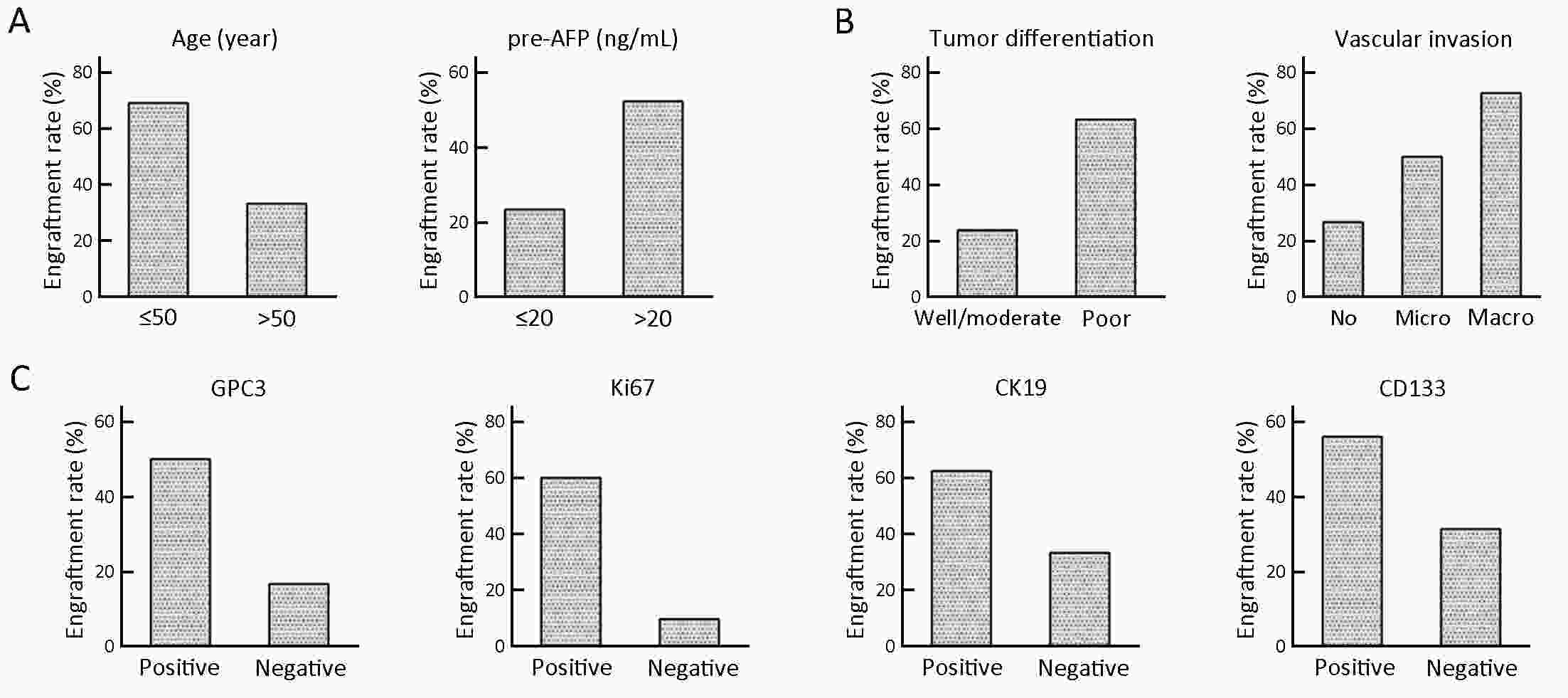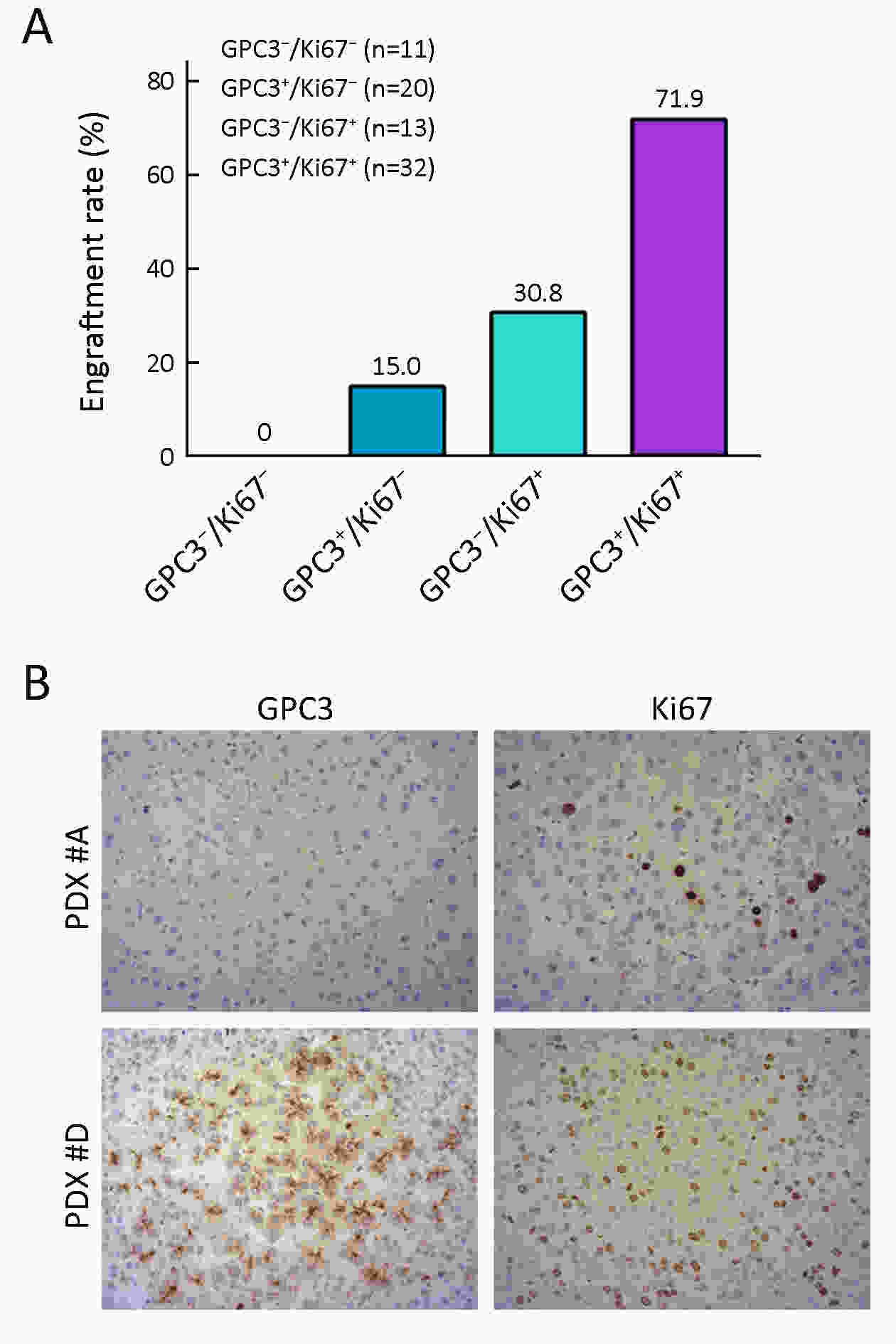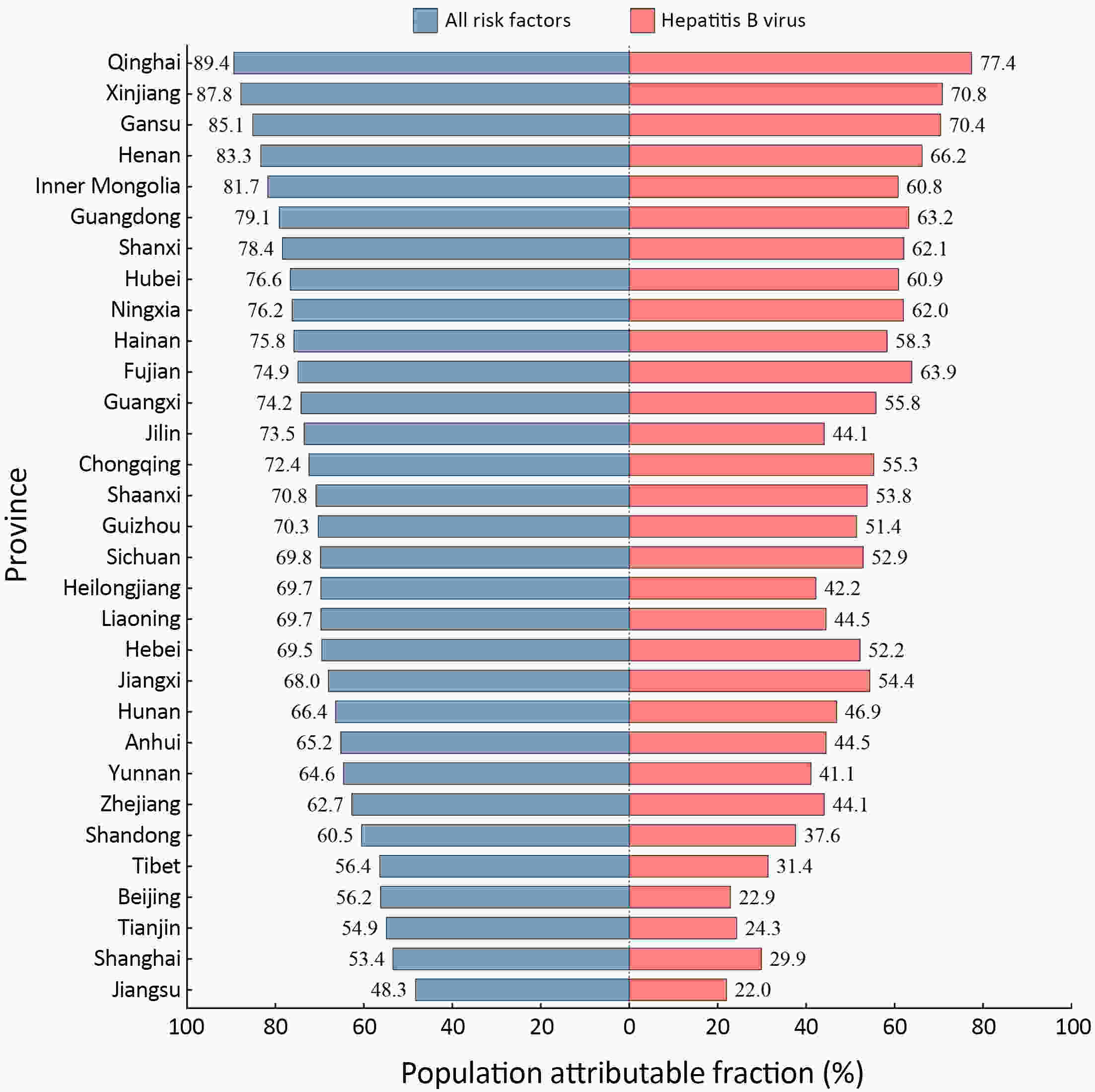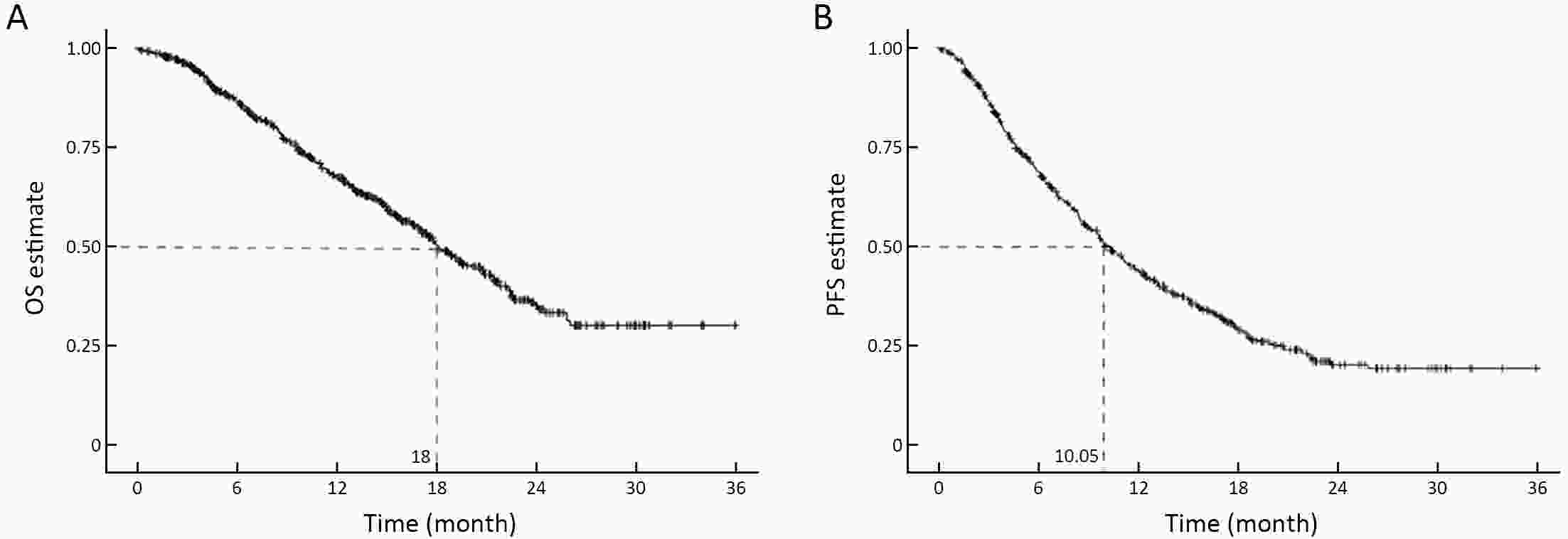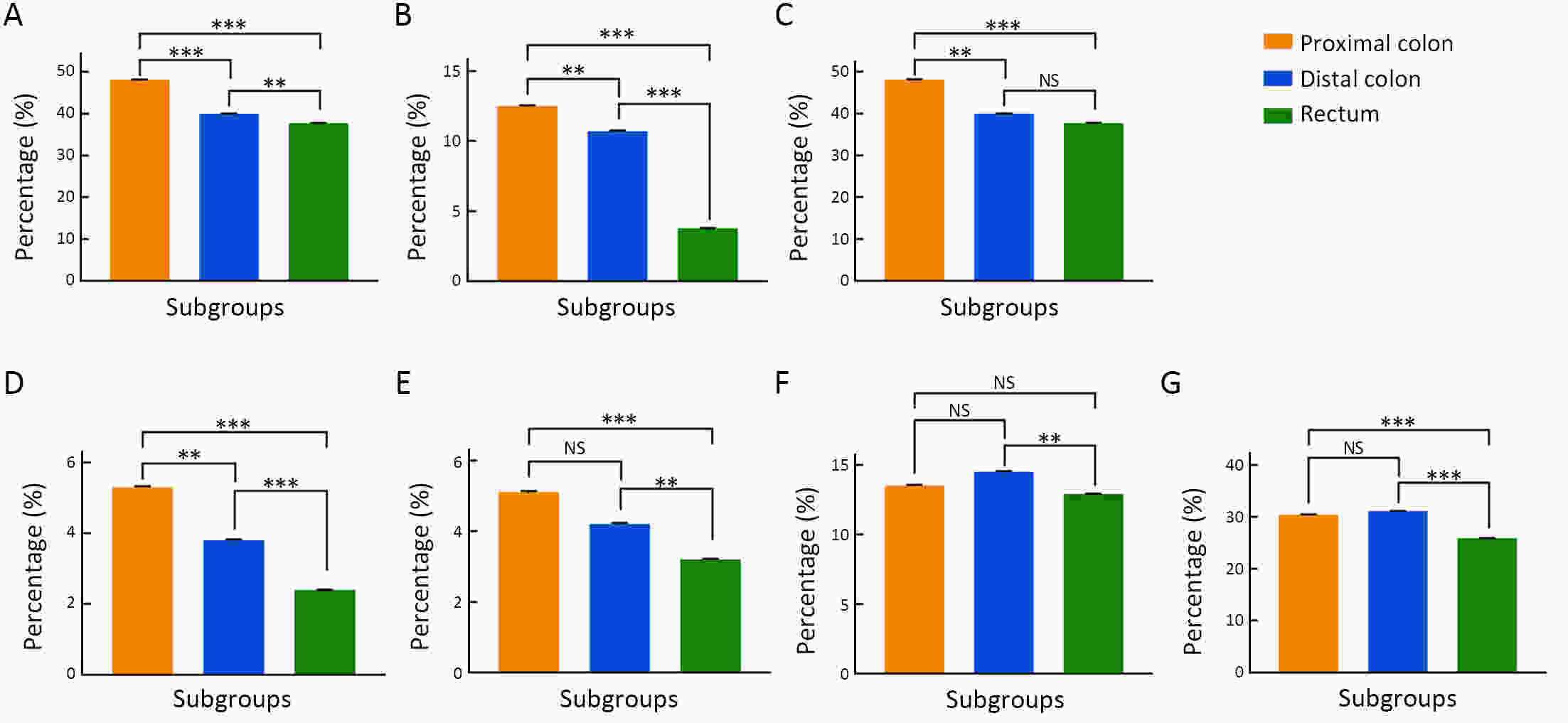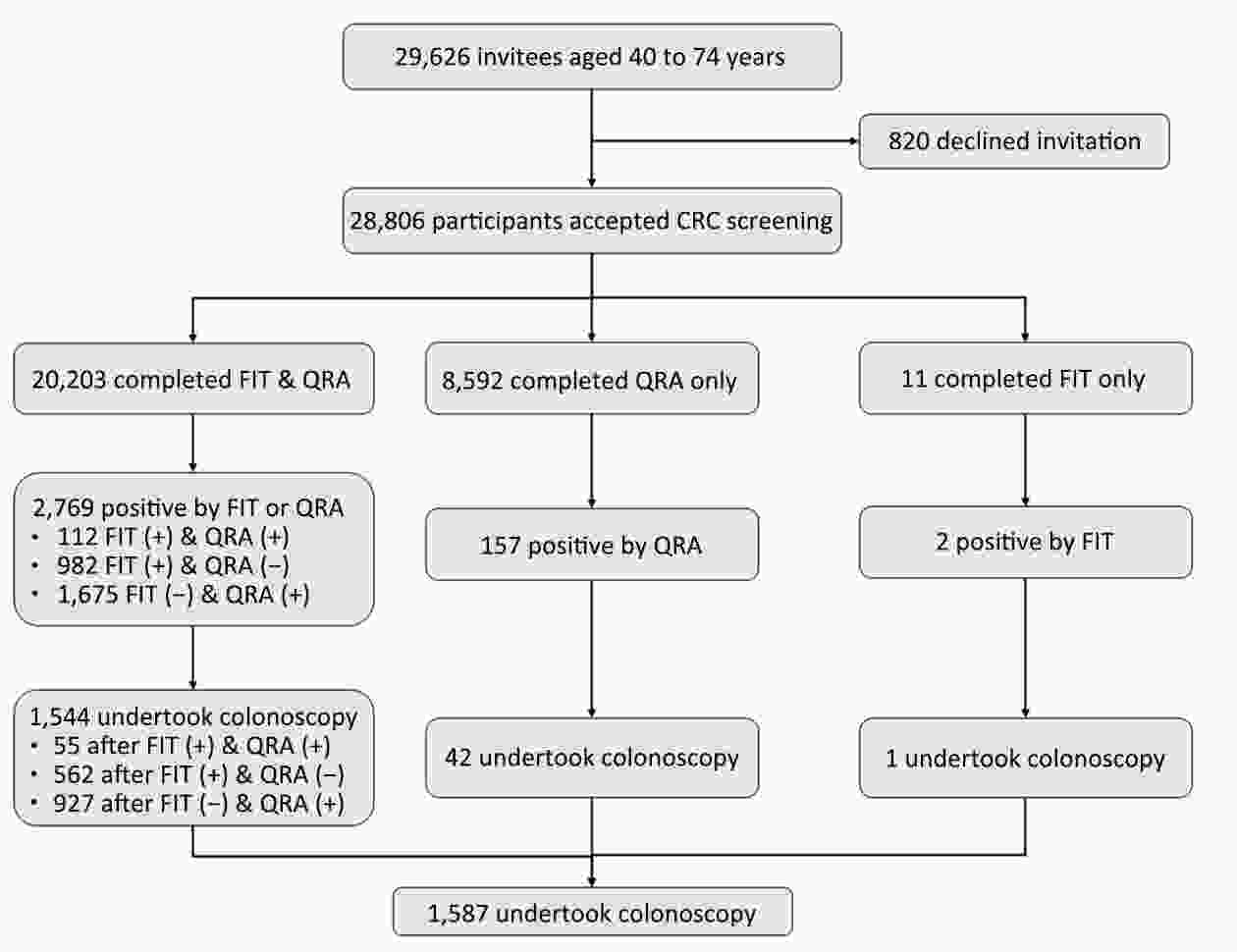2021 Vol.33(4)
Display Mode: |
2021, 33(4): 433-446.
doi: 10.21147/j.issn.1000-9604.2021.04.01
Abstract:
ObjectiveQuality assurance is crucial for oncological surgical treatment assessment. For rare diseases, single-quality indicators are not enough. We aim to develop a comprehensive and reproducible measurement, called the “Textbook Outcome” (TO), to assess the quality of surgical treatment and prognosis of gastric neuroendocrine carcinoma (G-NEC) patients. MethodsData from patients with primary diagnosed G-NEC included in 24 high-volume Chinese hospitals from October 2005 to September 2018 were analyzed. TO included receiving a curative resection, ≥15 lymph nodes examined, no severe postoperative complications, hospital stay ≤21 d, and no hospital readmission ≤30 d after discharge. Hospital variation in TO was analyzed using a case mix-adjusted funnel plot. Prognostic factors of survival and risk factors for non-Textbook Outcome (non-TO) were analyzed using Cox and logistic models, respectively. ResultsTO was achieved in 56.6% of 860 G-NEC patients. TO patients had better overall survival (OS), disease-free survival (DFS), and recurrence-free survival (RFS) than non-TO patients (P<0.05). Moreover, TO patients accounted for 60.3% of patients without recurrence. Multivariate Cox analysis revealed non-TO as an independent risk factor for OS, DFS, and RFS of G-NEC patients (P<0.05). Increasing TO rates were associated with improved OS for G-NEC patients, but not hospital volume. Multivariate logistic regression revealed that non-lower tumors, open surgery, and >200 mL blood loss were independent risk factors for non-TO patients (P<0.05). ConclusionsTO is strongly associated with multicenter surgical quality and prognosis for G-NEC patients. Factors predicting non-TO are identified, which may help guide strategies to optimize G-NEC outcomes.
2021, 33(4): 447-456.
doi: 10.21147/j.issn.1000-9604.2021.04.02
Abstract:
ObjectiveThe predictive effect of preoperative chemoradiotherapy (CRT) is low and difficult in guiding individualized treatment. We examined a surrogate endpoint for long-term outcomes in locally advanced gastric cancer patients after preoperative CRT. MethodsFrom April 2012 to April 2019, 95 patients with locally advanced gastric cancer who received preoperative concurrent CRT and who were enrolled in three prospective studies were included. All patients were stage T3/4N+. Local control, distant metastasis-free survival (DMFS), disease-free survival (DFS) and overall survival (OS) were evaluated. Clinicopathological factors related to long-term prognosis were analyzed using univariate and multivariate analyses. The down-staging depth score (DDS), which is a novel method of evaluating CRT response, was used to predict long-term outcomes. ResultsThe median follow-up period for survivors was 30 months. The area under the curve (AUC) of the receiver operating characteristic (ROC) curve predicted by the DDS was 0.728, which was better than the pathological complete response (pCR), histological response and ypN0. Decision curve analysis further affirmed that DDS had the largest net benefit. The DDS cut-off value was 4. pCR and ypN0 were associated with OS (P=0.026 and 0.049). Surgery and DDS are correlated with DMFS, DFS and OS (surgery: P=0.001, <0.001 and <0.001, respectively; and DDS: P=0.009, 0.013 and 0.032, respectively). Multivariate analysis showed that DDS was an independent prognostic factor of DFS (P=0.021). ConclusionsDDS is a simple, short-term indicator that was a better surrogate endpoint than pCR, histological response and ypN0 for DFS.
2021, 33(4): 457-469.
doi: 10.21147/j.issn.1000-9604.2021.04.03
Abstract:
ObjectiveTo validate the 8th edition of the American Joint Committee on Cancer (AJCC) staging system for pancreatic ductal adenocarcinoma (PDAC) in a Chinese cohort of radically resected patients and to develop a refined staging system for PDAC. MethodsData were collected from the China Pancreas Data Center (CPDC) for patients with resected PDAC in 2016 and 2017, and cancer-specific survival (CSS) was evaluated using the Kaplan-Meier method and log-rank test. Univariate and multivariate analyses based on Cox regression were performed to identify prognostic factors. The recursive partitioning analysis (RPA), Kaplan-Meier method, and log-rank test were performed on the training dataset to generate a proposed modification for the 8th TNM staging system utilizing the preoperative carbohydrate antigen (CA)19-9 level. Validation was performed for both staging systems in the validation cohort. ResultsA total of 1,676 PDAC patients were retrieved, and the median CSS was significantly different between the 8th TNM groupings, with no significant difference in survival between stage IB and IIA. The analysis of T and N stages demonstrated a better prognostic value in the N category. Multivariate analysis showed that the preoperative serum CA19-9 level was the strongest prognostic indicator among all the independent risk factors. All patients with CA19-9 >500 U/mL had similar survival, and we proposed a new staging system by combining IB and IIA and stratifying all patients with high CA19-9 into stage III. The modified staging system had a better performance for predicting CSS than the 8th AJCC staging scheme. ConclusionsThe 8th AJCC staging system for PDAC is suitable for a Chinese cohort of resected patients, and the N category has a better prognostic value than the T category. Our modified staging system has superior accuracy in predicting survival than the 8th AJCC TNM staging system.
2021, 33(4): 470-479.
doi: 10.21147/j.issn.1000-9604.2021.04.04
Abstract:
ObjectivePatient-derived xenograft (PDX) models provide a promising preclinical platform for hepatocellular carcinoma (HCC). However, the molecular features associated with successful engraftment of PDX models have not been revealed. MethodsHCC tumor samples from 76 patients were implanted in immunodeficient mice. The molecular expression was evaluated by immunohistochemistry. Patient and tumor characteristics as well as tumor molecular expressions were compared for PDX engraftment using the Chi-square test. The independent prediction parameters were identified by logistic regression analyses. ResultsThe engraftment rate for PDX models from patients with HCC was 39.47% (30/76). Tumors from younger patients and patients with elevated preoperative alpha-fetoprotein level had higher engraftment rates. Tumors with poor differentiation and vascular invasion were related to engraftment success. The positive expression of CK19, CD133, glypican-3 (GPC3), and Ki67 in tumor samples was associated with engraftment success. Logistic regression analyses indicated that GPC3 and Ki67 were two of the strongest predictors of PDX engraftment. Tumors with GPC3/Ki67 phenotypes showed heterogeneous engraftment rates, with 71.9% in GPC3+/Ki67+ tumors, 30.8% in GPC3−/Ki67+ tumors, 15.0% in GPC3+/Ki67− tumors, and 0 in GPC3−/Ki67− tumors. ConclusionsSuccessful engraftment of HCC PDXs was significantly related to molecular features. Tumors with the GPC3+/Ki67+ phenotype were the most likely to successfully establish HCC PDXs.
2021, 33(4): 480-489.
doi: 10.21147/j.issn.1000-9604.2021.04.05
Abstract:
ObjectiveThere is little information about contributions of the well-known risk factors to the liver cancer burden. We conducted a comparative study to estimate the liver cancer burden attributable to major risk factors. MethodsLiver cancer deaths for adults were estimated from 978 county-level surveillance points in China in 2014. Risk factors were identified from the International Agency for Research on Cancer and the World Cancer Research Fund International. Population attributable fraction (PAF) by age, sex, and province was calculated using multiple formulas. ResultsIn total, 72.4% of liver cancer deaths could be attributable to the studied risk factors. Hepatitis B virus (HBV) was responsible for the largest fraction of liver cancer burden in both genders (PAF=55.6% in males, PAF=46.5% in females). PAFs for liver cancer burden attributable to smoking (15.7% vs. 4.8%), and alcohol drinking (10.3% vs. 1.6%) were significantly higher in males than in females. The burden of HBV-attributable deaths was the highest in Qinghai province. ConclusionsHBV still contributes to the majority of liver cancer burden than any other risk factors. Targeted preventive measures should be implemented based on the degree of contributions of risk factors to liver cancer deaths.
2021, 33(4): 490-499.
doi: 10.21147/j.issn.1000-9604.2021.04.06
Abstract:
ObjectiveBevacizumab has an important and evolving role in improving outcomes in patients with metastatic colorectal cancer (mCRC) worldwide and was approved in China in 2010. However, there are limited real-world data on the efficacy and safety of chemotherapy regimens combined with bevacizumab in Chinese patients with mCRC. This observational, phase IV trial study aimed to obtain more experience on the efficacy and safety of bevacizumab combined with chemotherapy in Chinese mCRC patients. MethodsBetween September 2013 and November 2016, patients with histologically confirmed mCRC were enrolled in a prospective, multicenter, observational, non-interventional phase IV trial at 26 centers across China. Eligible patients received different chemotherapeutic regimens combined with bevacizumab. The efficacy and safety data in the intention-to-treat study population were analyzed. ResultsA total of 611 patients were included in the efficacy analysis. The median overall survival and median progression-free survival was 18.00 and 10.05 months, respectively. The objective response rate was 21.00% and disease control rate was 89.40%. In subgroup analyses, the survival differences were observed according to metastatic status, duration of treatment and elevation in blood pressure. A total of 613 patients were evaluable for safety assessments. And 569 (92.82%) patients reported at least one adverse event (AE), and 151 (24.63%) experienced grade 3 or higher AEs. The incidence of bevacizumab-associated AEs of special interest was reported in 31 (5.06%) patients with hypertension (n=12), abscesses and fistulae (n=7), bleeding (n=6), proteinuria (n=3), gastrointestinal perforation (n=2) and venous thrombotic events (n=1). ConclusionsThis observational phase IV trial broadens our experience and knowledge of bevacizumab in the Chinese population and provides a good indication of its overall efficacy and safety. Bevacizumab in combination with chemotherapy offers clinical benefits to Chinese patients with mCRC and has an acceptable and manageable safety profile.
2021, 33(4): 500-511.
doi: 10.21147/j.issn.1000-9604.2021.04.07
Abstract:
ObjectiveThe clinical and biological characteristics of colorectal cancer have been found to differ depending on the anatomic site of the cancer. However, for Chinese patients, there is limited information on the proportion of cases at each site and the related features. In this study, we explored the location, distribution and other features of colorectal cancers at each anatomic site in Chinese patients. MethodsWe conducted a hospital-based study using hospitalization summary reports from 10 Peking University-affiliated hospitals from 2014 to 2018; the reports covered a total of 2,097,347 hospitalizations. Incident cases were chosen as the study population, and their epidemiological features were further analyzed. ResultsA total of 20,739 colorectal cancer patients were identified. Rectum was the most common location (48.3%) of the cancer, whereas the proportions of patients with distal and proximal colon cancer were 24.5% and 18.6%, respectively. Patients with rectal cancer were predominantly male and were the youngest for all anatomical sites (each P<0.001). The highest proportion of emergency admissions, the longest hospital stays and the highest hospitalization costs were found in patients with proximal colon cancer (each P<0.001). The proximal colon cancer subgroup included the highest proportions of patients with medical histories of cholecystectomy, cholecystolithiasis and/or gallbladder polyps and appendectomy (P=0.009, P<0.001 and P<0.001, respectively). The distal colon cancer subgroup included the highest proportions of patients with medical histories of diabetes and hypertension (P<0.001, respectively). ConclusionsThe patterns of colorectal cancer observed in this study differ from those reported for Western patients and show a significantly higher proportion of patients with rectal cancer. Different epidemiological features were also found based on anatomic sites. Further studies based on tumor location should be conducted to facilitate more accurate screening and treatment.
2021, 33(4): 512-521.
doi: 10.21147/j.issn.1000-9604.2021.04.08
Abstract:
ObjectiveIntegration of risk stratification into fecal immunochemical test (FIT) might aid in the suboptimal detection of advanced neoplasms by FIT in colorectal cancer (CRC) screening. A comparative study was conducted to evaluate the participation and diagnostic yield of the parallel combination of questionnaire-based risk assessment (QRA) and FIT, FIT-only and QRA-only strategies in a CRC screening program in China. MethodsThe study included 29,626 individuals aged 40−74 years and invited to participate in a CRC screening program in China. Participants were first invited to undertake QRA and one-time FIT (OC-sensor). Participants with positive QRA or FIT were deemed to be high-risk individuals who were recommended for subsequent colonoscopy. Participation, detection rate, and resource demand for colonoscopy were calculated and compared. ResultsOf the 29,626 invitees, 20,203 completed the parallel combination, 8,592 completed the QRA-only, and 11 completed the FIT-only strategy. For the parallel combination, FIT-only, and QRA-only strategies, the overall positivity rates were 10.2% (2,928/28,806), 5.4% (1,096/20,214), and 6.8% (1,944/28,795), respectively; the yield of advanced neoplasm per 10,000 invitees were 46.9 [95% confidence interval (95% CI): 39.8−55.4], 36.8 (95% CI: 30.5−44.4), and 12.2 (95% CI: 8.8−16.8), respectively; the positive predictive values for detecting advanced neoplasms among participants who completed colonoscopy were 4.7% (95% CI: 4.0%−5.6%), 9.9% (95% CI: 8.3%−11.9%), and 1.9% (95% CI: 1.3%−2.6%), respectively; the number of colonoscopies required to detect one advanced neoplasm was 11.4 (95% CI: 9.8−13.4), 5.7 (95% CI: 4.8−6.7), and 28.4 (95% CI: 20.7−39.2), respectively. ConclusionsThe parallel combination of QRA and FIT did not show superior efficacy for detecting advanced neoplasm compared with FIT alone in this CRC screening program.
2021, 33(4): 522-534.
doi: 10.21147/j.issn.1000-9604.2021.04.09
Abstract:
Small cell lung cancer (SCLC) is a high-grade neuroendocrine (NE) cancer characterized by high circulating tumor-cell burden and early extensive metastasis. Considering the complexity of SCLC genes and the immune microenvironment, their unique molecular heterogeneity profiles have been continuously explored. The understanding of SCLC subtypes has recently changed from traditional “classical” and “variant” types to “NE” and “non-NE” phenotypes and to the subtypes defined by major transcriptional regulators, which indicates the gradual revelation of high intratumoral heterogeneity and plasticity characteristics of SCLCs. Advances in genomics as well as the development of single-cell sequencing analysis and new preclinical models have helped investigators gain many new insights into SCLCs and the development of targeted therapy and immunotherapy strategies. This article provides an overview of changes in molecular typing, tumor heterogeneity, and plasticity and that of advances in the precise treatment of different subtypes of SCLC.
Small cell lung cancer (SCLC) is a high-grade neuroendocrine (NE) cancer characterized by high circulating tumor-cell burden and early extensive metastasis. Considering the complexity of SCLC genes and the immune microenvironment, their unique molecular heterogeneity profiles have been continuously explored. The understanding of SCLC subtypes has recently changed from traditional “classical” and “variant” types to “NE” and “non-NE” phenotypes and to the subtypes defined by major transcriptional regulators, which indicates the gradual revelation of high intratumoral heterogeneity and plasticity characteristics of SCLCs. Advances in genomics as well as the development of single-cell sequencing analysis and new preclinical models have helped investigators gain many new insights into SCLCs and the development of targeted therapy and immunotherapy strategies. This article provides an overview of changes in molecular typing, tumor heterogeneity, and plasticity and that of advances in the precise treatment of different subtypes of SCLC.

 Abstract
Abstract FullText HTML
FullText HTML PDF 2312KB
PDF 2312KB

